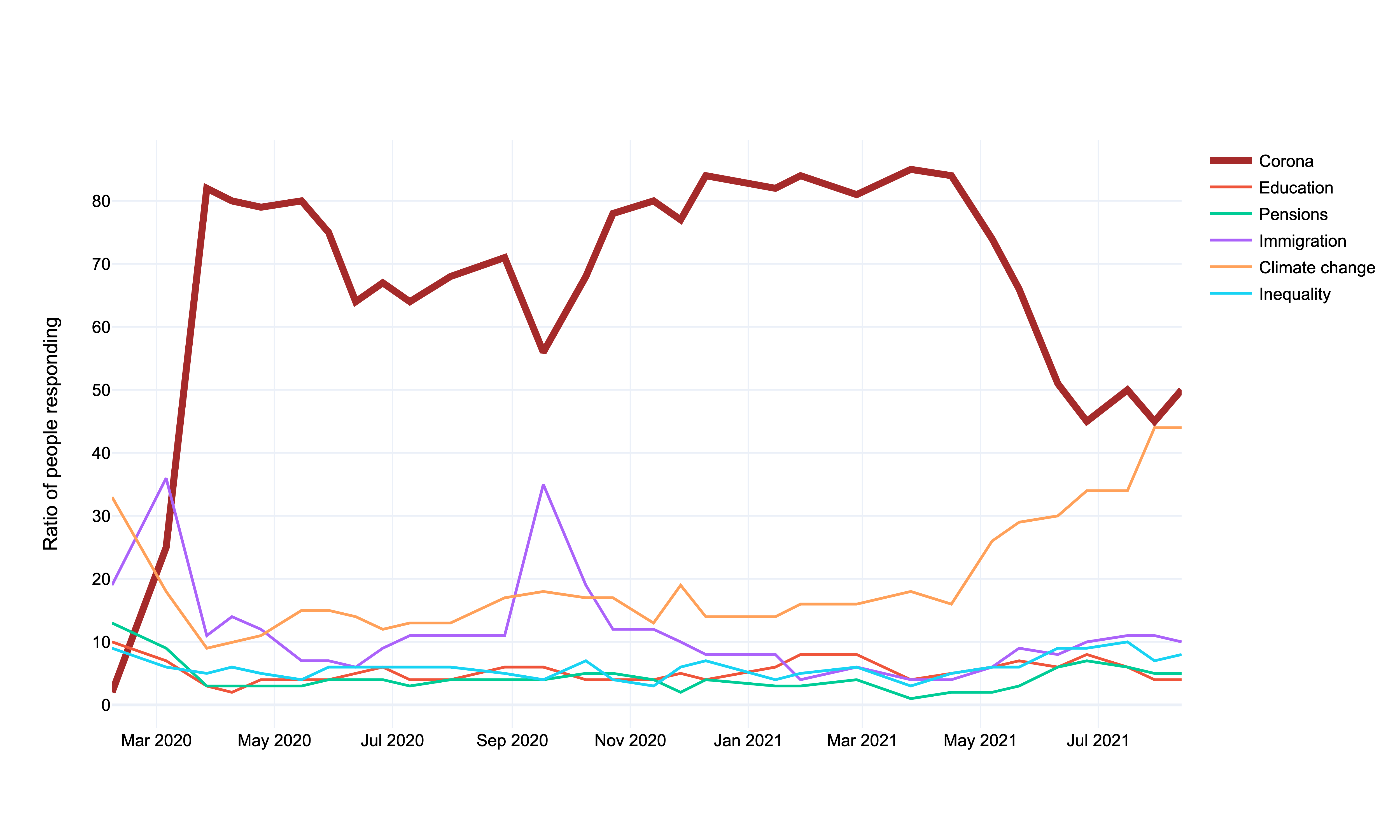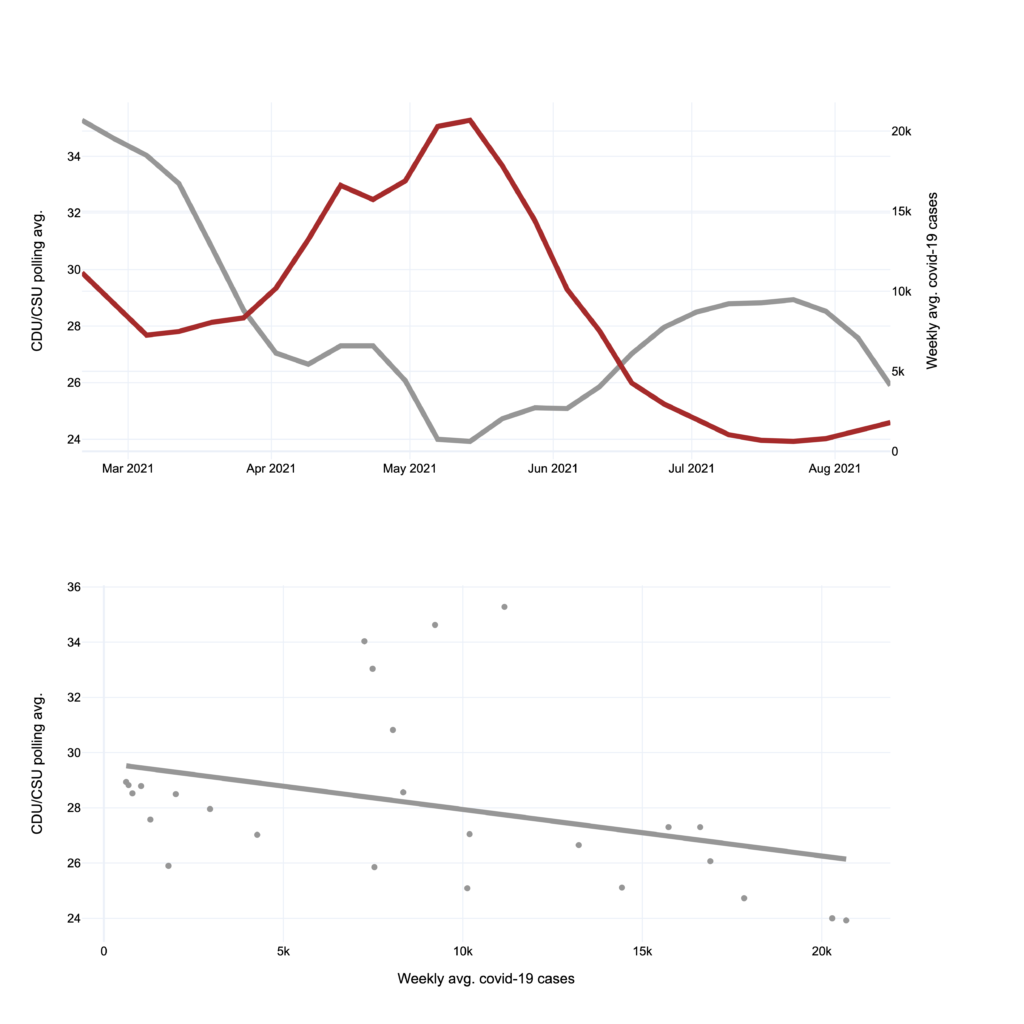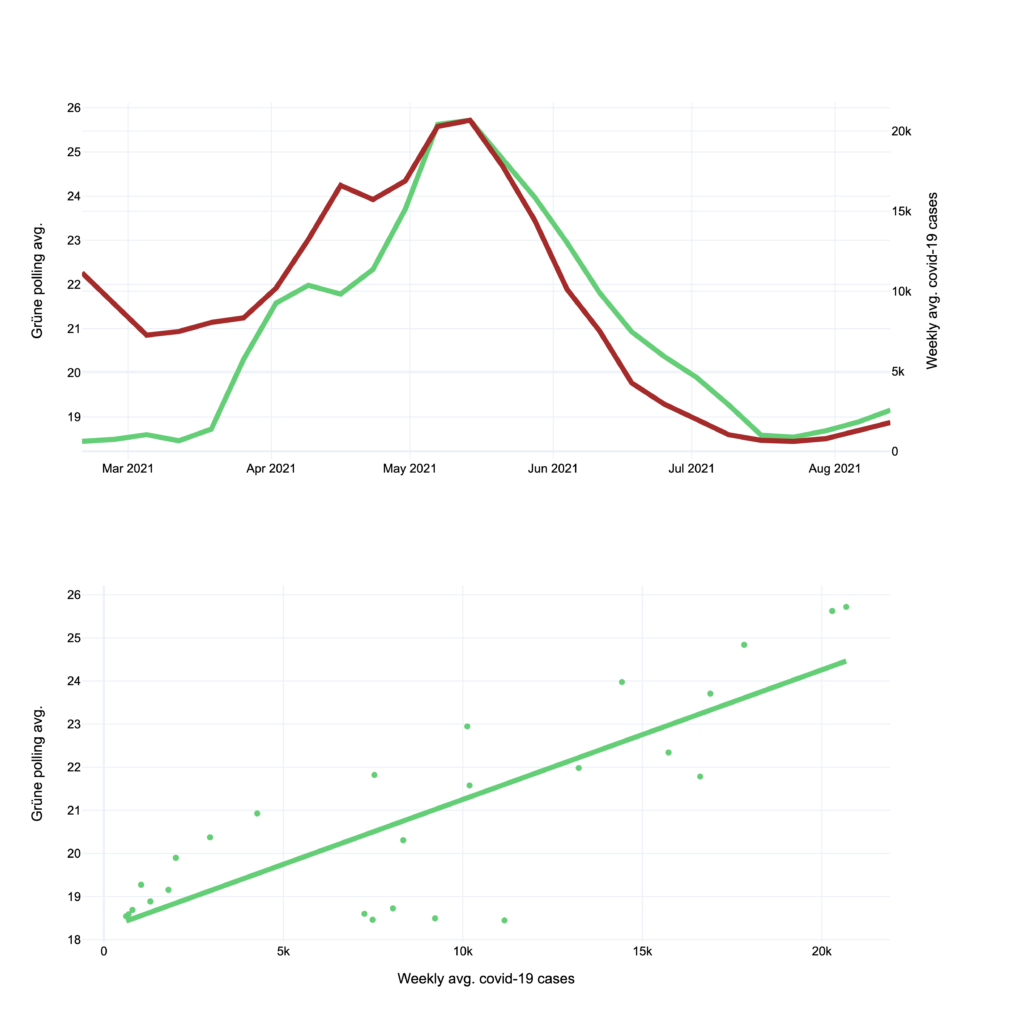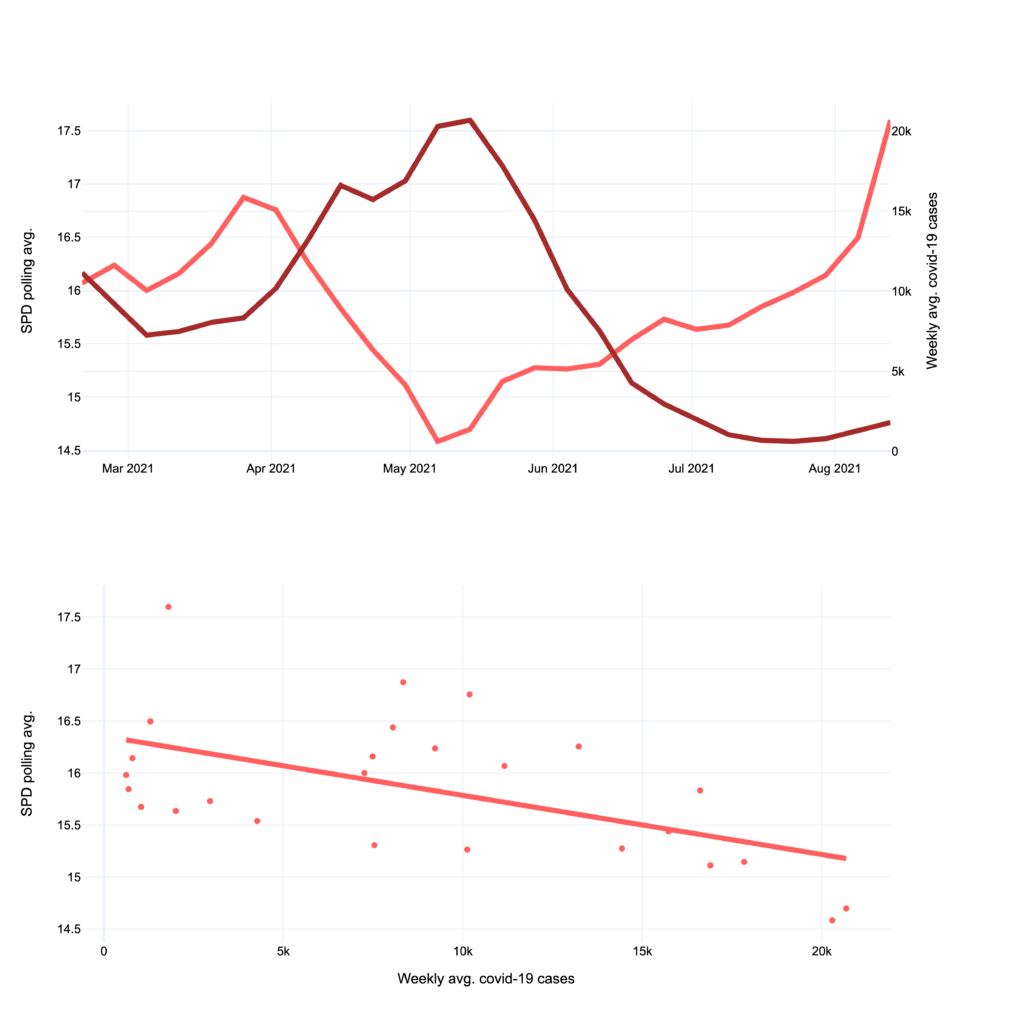One of the main reasons I started this blog is because I think that the media often overlooks the big picture and long-term trends. I want to offer my readers a long-term perspective on German politics. With the 2021 election drawing nearer, the media cycles are becoming shorter and shorter. Small gaffes are amplified, individual polls are overemphasized, and the short-term view reigns supreme.
I’m going to make the case that the main story of the 2021 election and the most important topic for voters was the covid-19 pandemic. It was more important to voters than any other topic (including climate change, immigration, education, etc.). The number of covid-19 infections in Germany are so closely correlated to the biggest three parties (CDU/CSU, the Greens and the SPD) and their standing in the polls that I would go as far as to say, there is causation — not just correlation.
Sometimes the obvious take is the right one. The pandemic has upended so many things we took for granted, has so radically altered all of our lives and re-focused society so much, why wouldn’t it be the most important factor in this election?
Don’t take it from me
Credit where credit is due: the awesome folks at Forschungsgruppe Wahlen: Politbarometer track which topics are the most important to voters. Looking at their poll, it’s beyond obvious what topic this is.

I’m not saying that the coronavirus hasn’t gotten enough media attention. Unlike climate change though, I think it just hasn’t been viewed enough through the guise of how the parties and candidates approach it which is odd given how important it is to voters. And it’s really important to voters.
How covid-19 affected the big three’s popularity
I’ll give you the takeaway upfront: higher cases benefit Die Grüne and it hurts the CDU/CSU in the polls (and for a while the SPD). There’s a an extremely solid correlation between cases and political fortunes.
Before we dive into the data — one important piece of information about all the charts that follow: covid-19 cases are a great example of what data analysts call a leading indicator. A change in a leading indicator (covid-19 cases) will lead to a change in another metric (polling results) in the future. That is why I compared weekly polling averages with the weekly average of covid-19 cases three weeks prior. Please keep this in mind when looking at the data.
Let’s start with the Christian Democrats, aka the senior coalition partner of the current government. The party that runs the chancellery and the health ministry. The majority of the responsibility for handling the covid-19 pandemic falls on them. As you can expect, rising cases are not good for them whereas falling cases have coincided with a rise in the polls.

These two charts tell the whole story. Coronavirus cases and the CDU/CSU polling average clearly have an inverse relationship. In the lower chart of the two, you can see the linear relationship that exists between them. To me, this intuitively makes sense. In the third and fourth wave, the public had way more information about what works against the pandemic (vaccinations, mask mandates inside, etc.) and what didn’t. It assigned more blame to the people in charge when cases were rising and the vaccination-rollout was going slowly, and thought of them more positively when the opposite was the case. That’s the main difference to the first two waves when the CDU/CSU polled consistently high. For the main opposition party (at least according to my analysis), Die Grüne, the opposite is the case.

To be honest, I was shocked by how closely correlated the two metrics were. If you look at the two curves above, you can see that they move almost in tandem, rising and falling together.
In statistics, the most widely used statistical measurement for correlation is Pearson’s R. It denotes a perfect correlation with 1. For the polling average of the Greens and the weekly covid-19 case average three weeks prior, it is 0.82. That is really high.
My interpretation of this is, that the public flocked to the main opposition party when things were going badly and did the opposite when the waves died down. Keep in mind again, that we are looking at the weekly covid-19 case average from three weeks prior to the polling average. When I built my model, I was looking for factors that could forecast a party’s popularity before this was reflected in the polls. Nothing I found was so predictive of a party’s performance in the polls as covid-19 cases are for the Green’s popularity.
But there is one more party missing from this analysis: the SPD. They are part of the current government and so their polling average relationship to the pandemic is quite similar to the CDU/CSU’s with one key difference.

The SPD curve was similar to their coalition partner until about 3 to 4 weeks ago. You can see an uptick of about 1.5% starting then. I believe this is due to the fact that since the 2021 election cycle is coming to a close, the SPD is now perceived less as a governing party in power and more as an opposition party and a real alternative to the Christian Democrats.
How will chancellor Baerbock/Laschet/Scholz handle the next wave?
When I set out to look at the relationship between covid-19 cases and the polls, I did not expect to find such a strong relationship between the two. Because of this strong relationship, I think the importance of the pandemic to voters becomes clear. This makes one shortcoming of the media glaringly obvious in my opinion: how do the big three parties differ when it comes to handling the coronavirus?
The fact that the parties and their candidates want to stay away from discussing the pandemic makes sense to me. It is a difficult topic and the benefits of being vague and noncommittal about it are obvious. Obfuscating what one would do in the face of rising case numbers is the less risky option. But journalists have pressed politicians on other difficult topics plenty. Climate change has justly received a lot of attention, especially in the light of the flooding disaster in July. Other topics, such as immigration in the wake of the Taliban takeover of Afghanistan, have received attention as well.
Yet the different policy approaches each of the three big parties and candidates would pursue if this current wave intensifies further or what Germany will look like with an endemic coronavirus, have not been investigated, for the most part, by the German media. Given how very relevant the pandemic is to the public and how much it has and will continue to upend everyone’s lives, this feels like a disservice to voters. It leaves them less informed about a topic that they care deeply about.
Sources
Covid-19 cases collected by the Robert-Koch-Institut and published on the covid-19 data hub.
Forschungsgruppe Wahlen: Politbarometer poll can be accessed here.